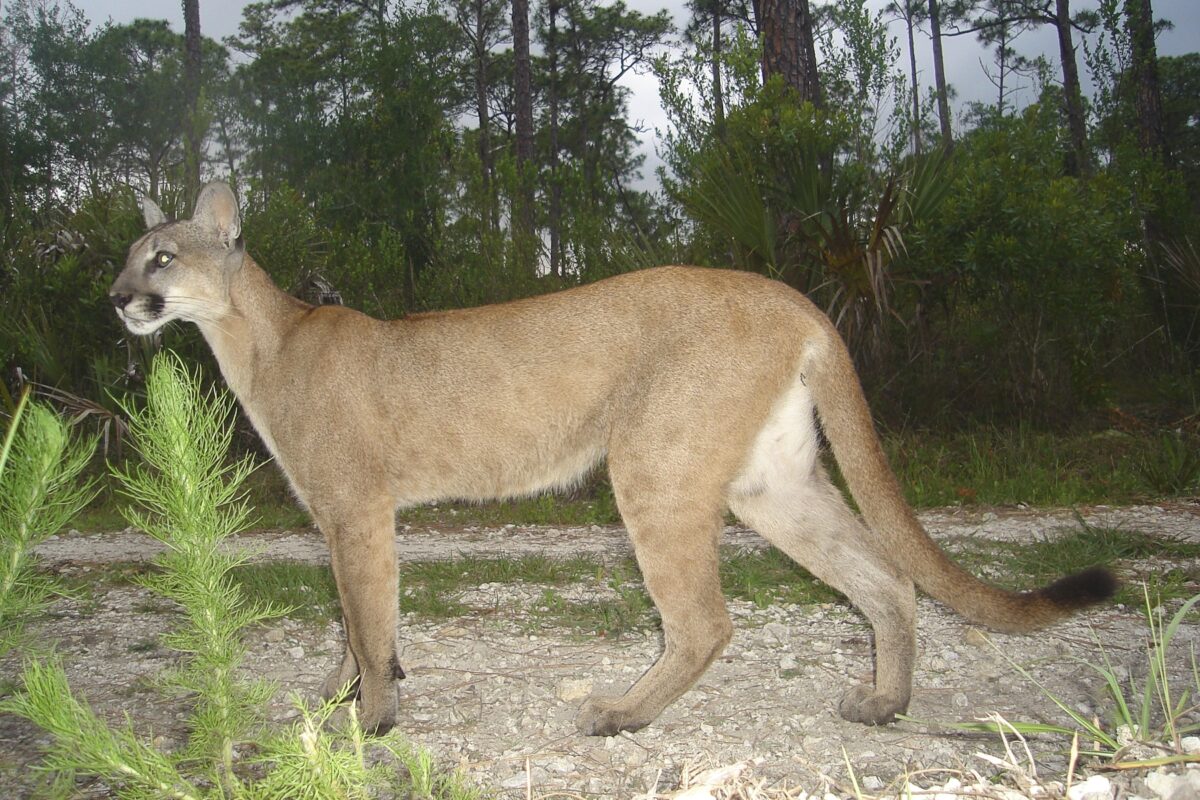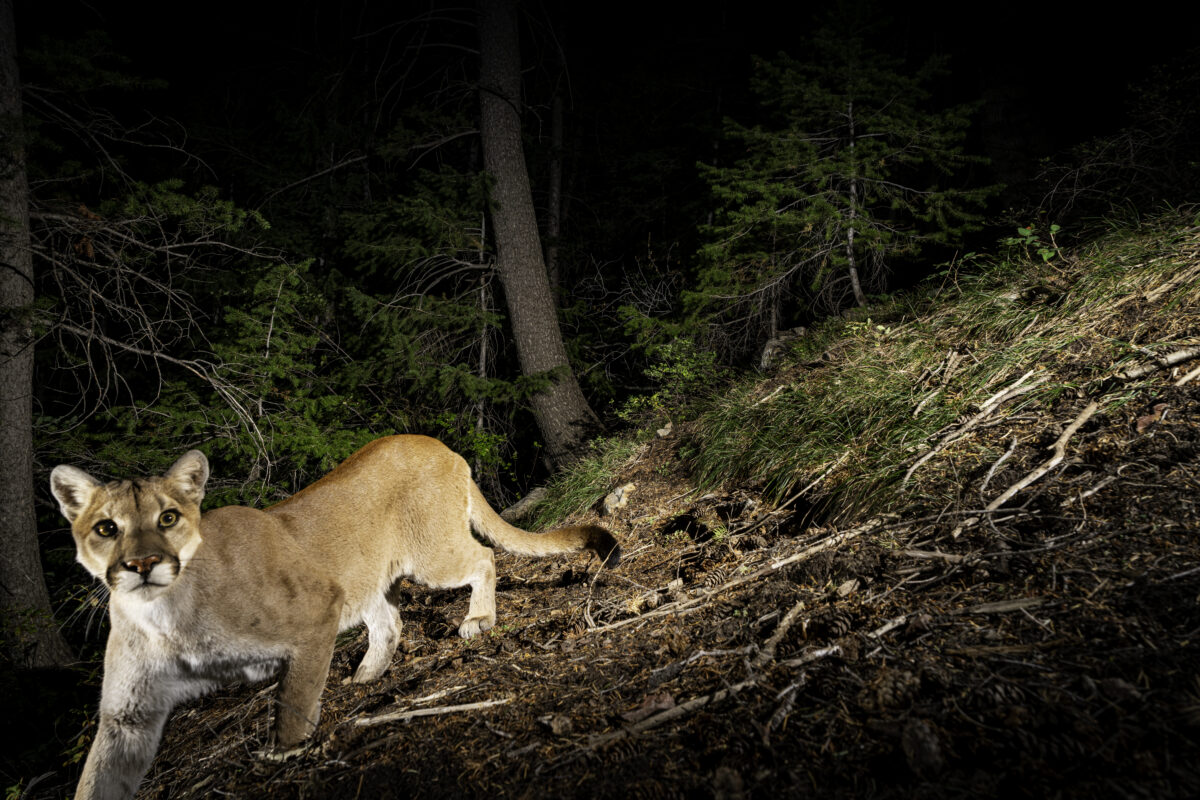You’ve probably seen some recent media coverage about the “lower than previously thought” number of mountain lions in California. These preliminary estimates, released by the California Mountain Lion Project, are just that — preliminary. Here at the Mountain Lion Foundation, part of our work is to be a clearinghouse for the most accurate and up to date scientific information on mountain lions. With that in mind, we reached out to some of the scientists at the California Mountain Lion Project, now known as California Carnivores, to ask, “What’s the story with these new, lower estimates of the number of lions in California?”
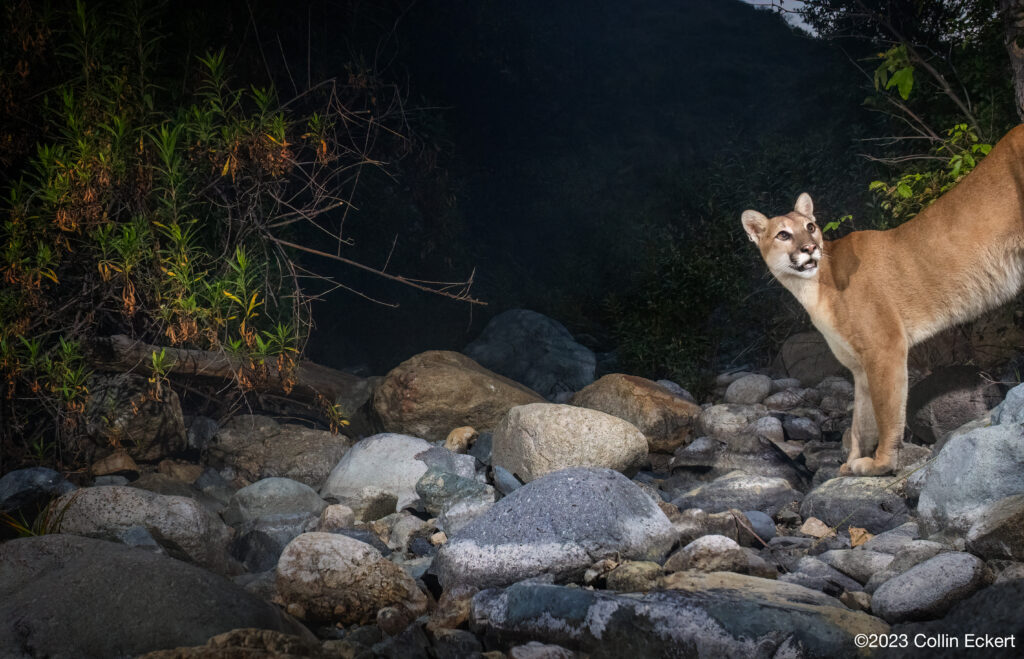
What is the California Mountain Lion Project?
The California Mountain Lion Project formed in 2001 under the Karen C. Drayer Wildlife Health Center at the University of California at Davis. Originally, the project centered on the Southern California mountain lion population, a major conservation concern. The project’s research focused on habitat fragmentation, disease, prey interactions with mountain lions, and coexistence with humans in Southern California. The program has expanded over the years, and its name changed to California Carnivores to reflect that.
How many mountain lions are there in California?
Justin Dellinger and the rest of the research team’s work has resulted in two preliminary population estimates for mountain lions of all age classes (adult mountain lions, juveniles, and kittens) in California. Both estimates represent the median value of two population estimate ranges utilizing slightly different data, including telemetry data from GPS collars and genetic sampling. Using only genetic sampling data yielded an estimate of 3,200 mountain lions of all age classes. The method that factored in telemetry data as well yielded an estimate of 4,500 mountain lions of all age classes.
The estimate of 4,500 mountain lions of all age classes is likely to be the more accurate estimate, as it considered home range sizes of collared animals. Despite the widespread media coverage, these estimates should be considered preliminary until they go through rigorous review by scientific peers. Also, they cannot be widely used for management until the findings are peer reviewed.
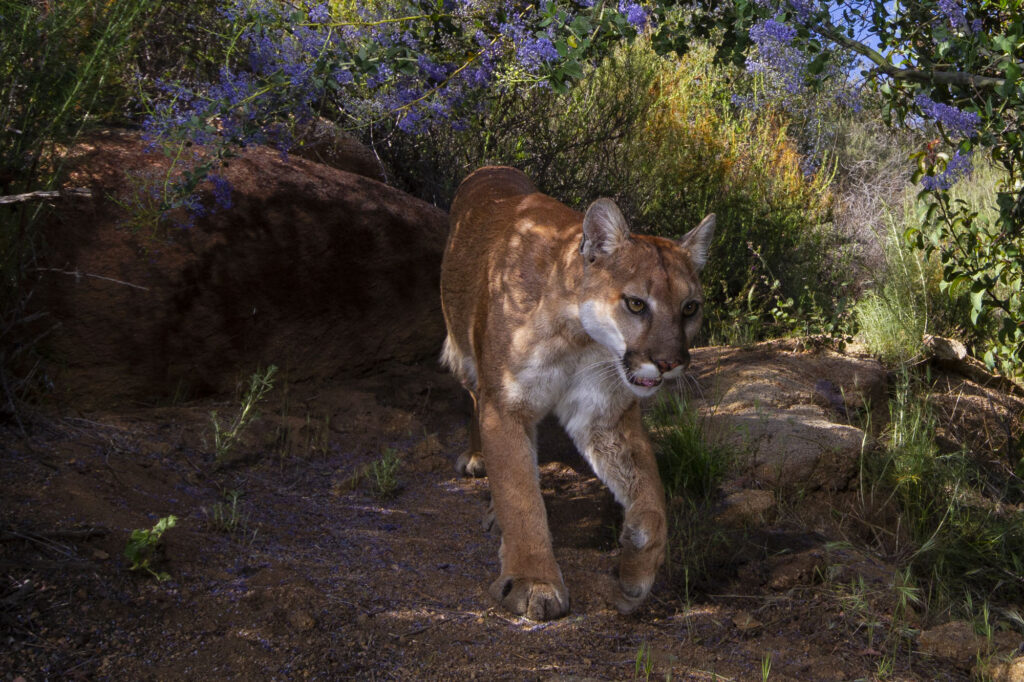
The old estimate for mountain lions was 6,000. Why is this new number so different?
The number of 6,000 mountain lions in California was a “back of the napkin” estimate. It took a reasonable mountain lion density and multiplied it by about how much habitat was in the state. This type of calculation has value, especially when there is no robust population assessment. However, the 6,000 mountain lions estimate was always a weak one.
The preliminary finding of 4,500 mountain lions was derived from robust data. If it is accepted in peer review, it will likely be the most accurate, current assessment of the mountain lion population in California.
Ultimately these numbers cannot be compared well, as they came from two different points in time with entirely different methodology. If the population estimate is accepted in peer review, the Mountain Lion Foundation will accept it as the updated number of mountain lions.
What does this estimate tell us?
Of course, the preliminary result tells us there are 4,500 mountain lions of all age classes. Even though that number is lower than previously thought, it’s still good news. On a statewide demographic level, mountain lions are doing well in California overall. However, the number of mountain lions in an area is not the only indication of how well mountain lions are doing.
Genetic health is a major indicator of population health, and often functions as a “canary in the coal mine” for population decline. It is widely understood that habitat fragmentation and lack of connectivity have caused genetic declines in Southern California mountain lion populations, threatening their long-term viability. This threat prompted the development of the Wallis Annenberg Wildlife Crossing near Los Angeles, along with a number of other important wildlife crossings across the state, and the petition by the Mountain Lion Foundation and the Center for Biological Diversity to list these lions populations as endangered in California. (That petition is currently still under review.)
However, we can look at this population estimate as a sign of hope. While mountain lions in California are struggling with habitat fragmentation and loss of genetic diversity in some regions, the issues haven’t caused the populations to become too small yet. Having a large enough population size means that populations will be better able to respond to interventions to promote genetic diversity, such as wildlife crossings.
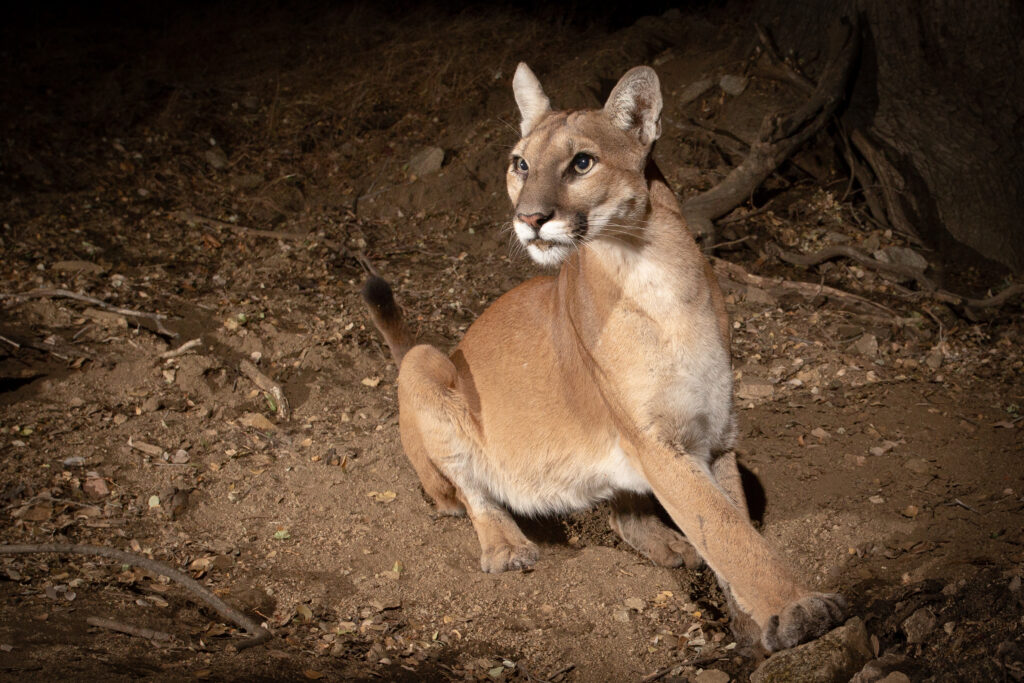
Mountain lion densities are higher or lower based on the landscape
Mountain lion density tells us approximately how many mountain lions there are in an area. Typically this is listed in research as “mountain lions per 100 km².” Lion density itself is continuous over the landscape, meaning there won’t be a big jump in lion density in adjacent areas.
The primary factor that limits how many mountain lions can be in an area, is the availability of prey. Meanwhile, the prey are limited by their access to vegetation for foraging. So, the greatest factor that influences mountain lion densities is typically the vegetation in the area. If there is abundant water and forage for prey species, there will likely be higher mountain lion densities.
This relationship leads to higher mountain lion densities in regions that have abundant water and forage, like the western Sierra Nevada and the western Coastal Range.
There are mountain lions in the Central Valley and the Mojave
There has been some media coverage stating that the Central Valley and Mojave have no mountain lions at all. To clarify, those two regions were not sampled directly so their estimated mountain lion populations were estimated based on other data from the study and the habitat in the area.
Researcher Justin Dellinger has published works on these populations that can be found here.
Is the mountain lion population increasing or decreasing?
This preliminary estimate of 4,500 mountain lions of all age classes represents a point in time. Monitoring with similar methods will need to be repeated in the future to assess population trends for mountain lions in California.
From a number’s perspective alone, mountain lions are doing well. While lion populations in certain areas are lower and more fragile than others, from a statewide perspective, their numbers are not too low. Additionally, mountain lions in California are not overpopulated. Overpopulation was a major fear and fueled opposition to the work of mountain lion advocates on Proposition 117, which permanently banned mountain lion sport hunting in 1990 in California. Prior to the legislation mountain lion hunting had been on moratorium since 1972. (These efforts during the 1980s eventually gave birth to the Mountain Lion Foundation as a nonprofit organization, in 1986.) Research overwhelmingly shows that mountain lions do not need to be hunted to avoid overpopulation, as their social structures and food availability do that on their own. This research provides another reference point, too: More than 50 years after a ban on hunting, mountain lions have not become overpopulated.
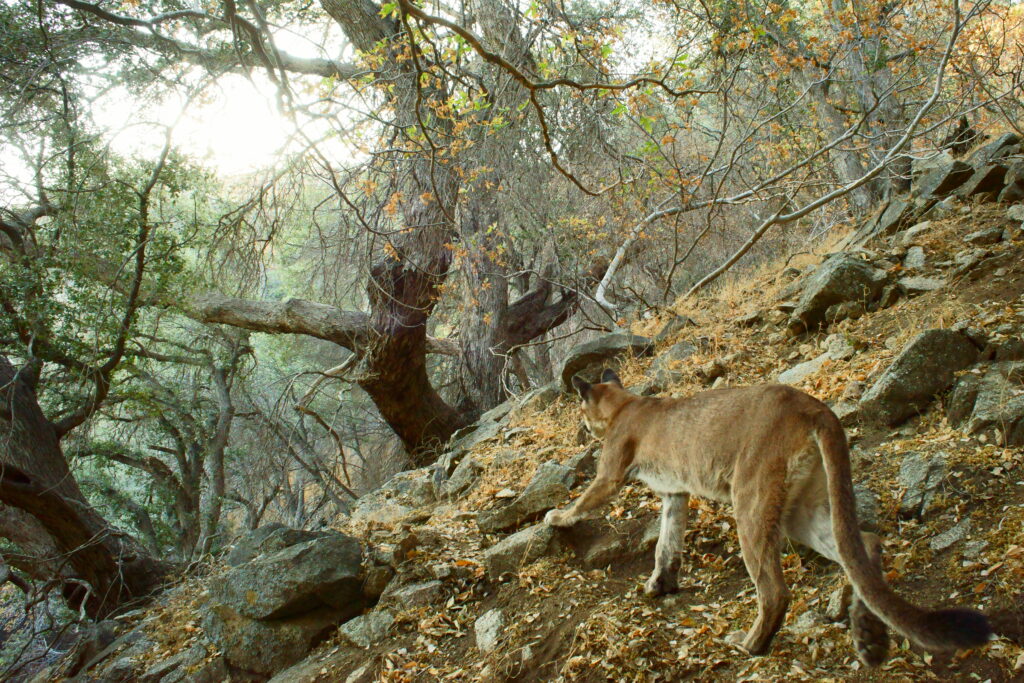
How does this estimate compare to other states and their methods?
Most states with mountain lions attempt to estimate their population in some way. Not all of these methods are created equal, however. Some rely heavily on hunter harvest statistics, which introduce considerable bias, and on little to no supplemental field data. Other methods are quite thorough, and data from the field are gathered regularly. The work done by the California Mountain Lion Project stands apart from many of these monitoring efforts mainly by its scope. Studies often intensively study one or two areas and apply those results to the remainder of the state. The new California estimates, by contrast, are sampled from many regions across California. This wide sampling effort will help to achieve a more accurate picture of the mountain lion population.
Some states have no official estimates at all. Currently, the only states with breeding populations and no official population estimates are Wyoming, Idaho, and Texas. As a result, scientists and managers are largely left to rely on these “back of the napkin” population estimates much like California’s old “6,000 mountain lions in the state” number. By looking at the discrepancy between California’s back of the napkin calculation, and the preliminary study estimate, we see the potential of overestimating populations when real data are not available. This discrepancy has particularly negative effects when hunting quotas are based on those flawed methods and assumptions.
Here at the Mountain Lion Foundation, we look forward to seeing this work once it is ready for publication, and we will continue to use the best available evidence in our work to advocate for mountain lions in California and across the country.



 Facebook
Facebook Twitter
Twitter Send Email
Send Email